Inside: Discover simple ways to improve your outdoor space and make gardening fun. Explore ideas that fit different styles and sizes of gardens.
Gardening can be a great way to refresh your yard and enjoy more time outside. Whether you have a small space or a large plot, there are plenty of ideas to match your style and needs.
These 25 garden ideas can help you create a space that is both beautiful and enjoyable to spend time in. Each idea is designed to inspire you to try something new and make your garden feel like your own.
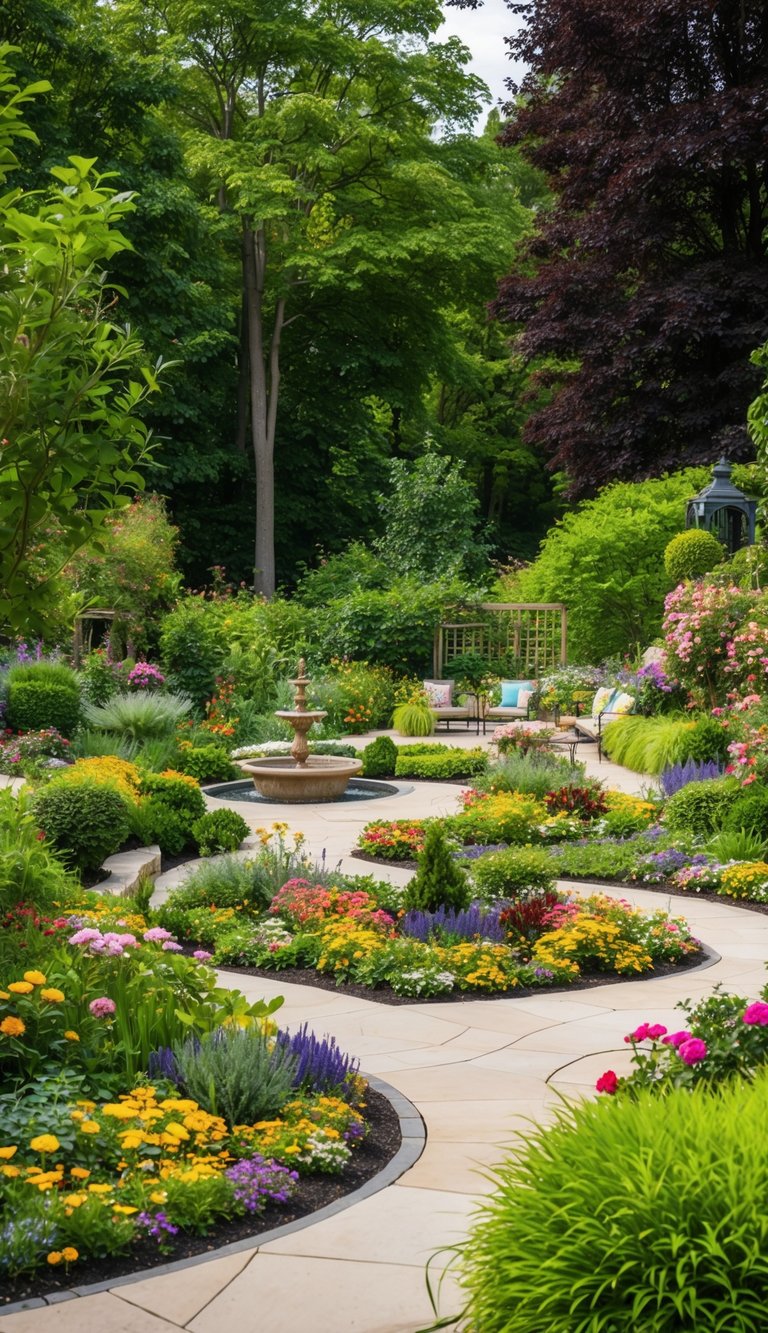
1. Build raised garden beds for better soil control
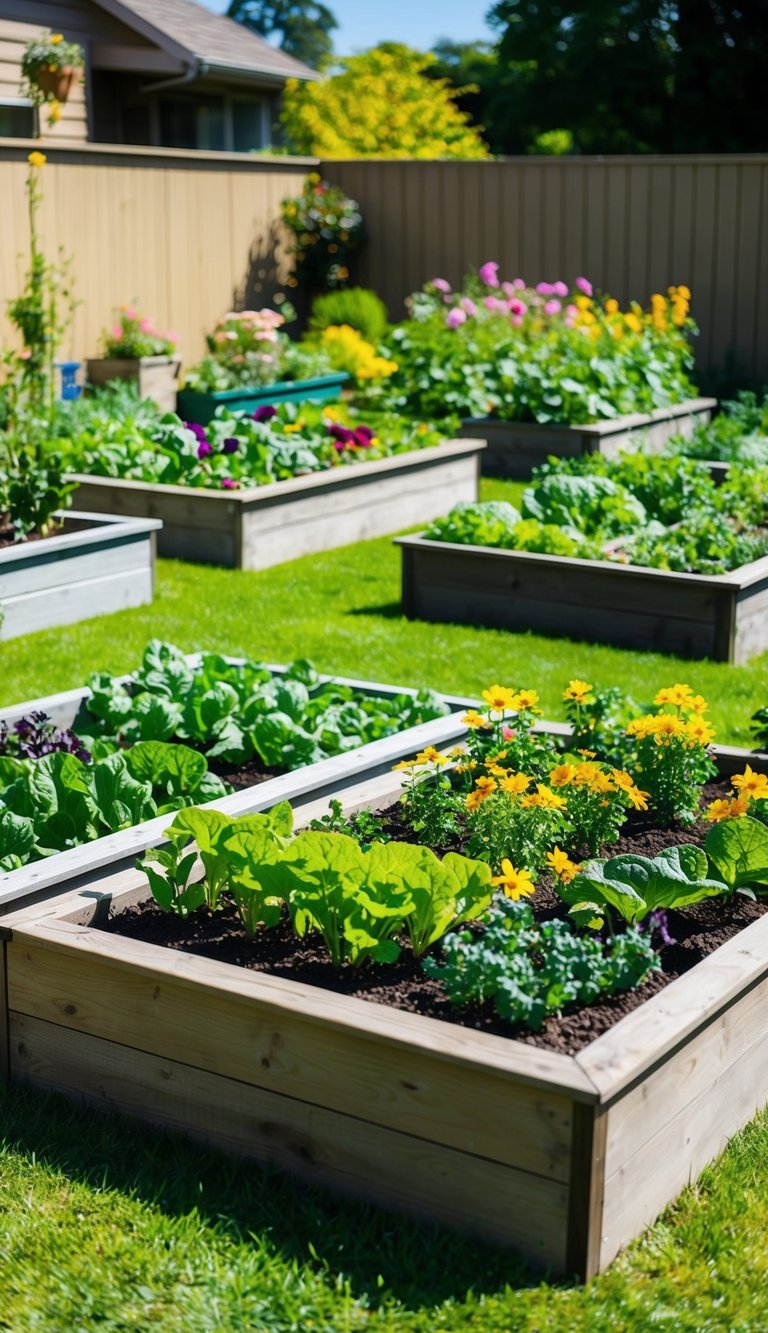
Raised garden beds help you manage your soil easily. You can fill them with the best soil mix for your plants. This prevents problems like poor drainage or hard soil.
They also keep weeds out better than ground-level gardens. Plus, working in raised beds is easier on your back and knees.
Expert Tip from MrPlanter: “Use untreated wood or bricks to build your beds for safety. Add compost regularly to keep soil rich and healthy.”
2. Plant a vertical garden with hanging planters
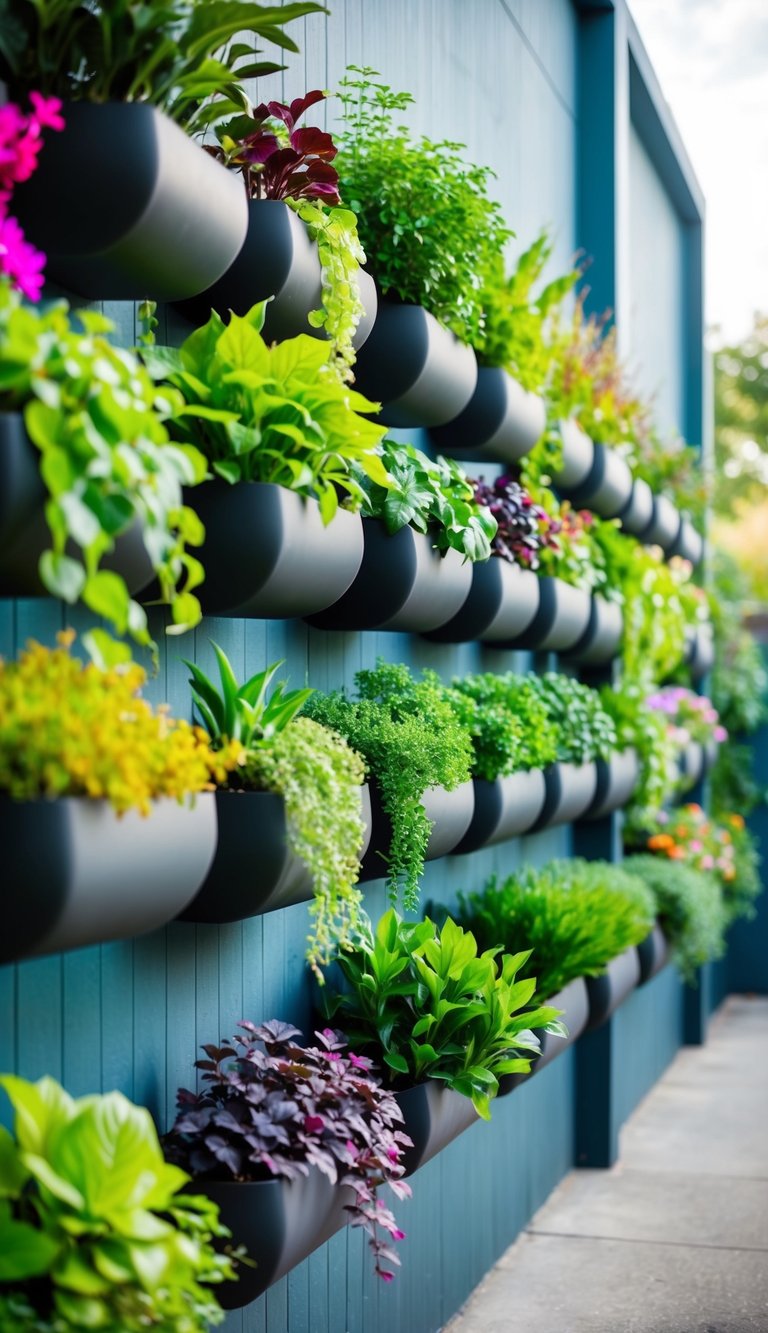
You can save space by using hanging planters on a wall or fence. Choose sturdy hooks or a grid wall to hold your plants securely. Mix different sizes and types of plants for a lively look. This setup works well indoors or outside where ground space is limited.
Expert Tip from MrPlanter: “Use lightweight pots to avoid stressing your supports. Water hanging plants carefully to prevent drips on the floor below.”
3. Create a garden buffet for pollinators with colorful blooms
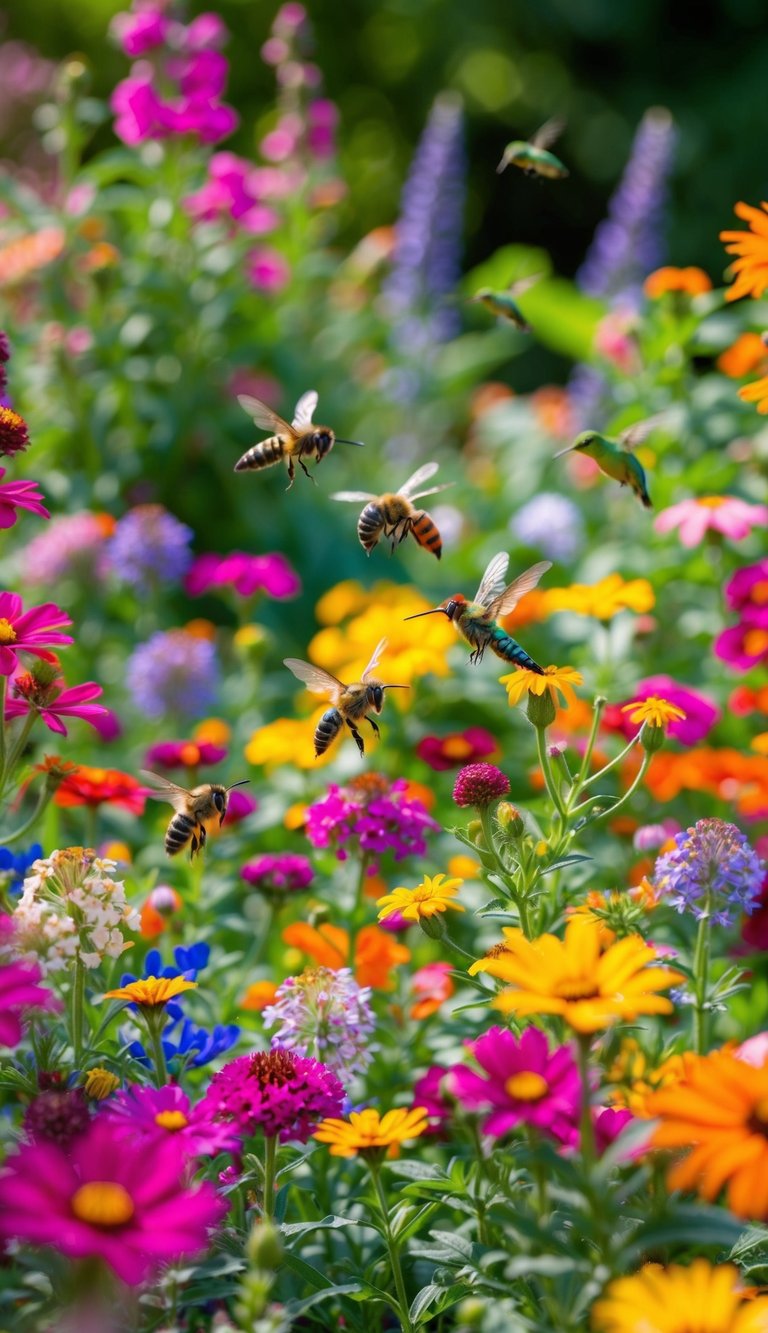
Plant a variety of flowers that bloom at different times to feed pollinators all season. Choose bright colors like purple, yellow, and blue to attract bees and butterflies. Use native plants to support local wildlife.
Mix flower shapes and sizes to suit different pollinators. Avoid pesticides to keep your garden safe for them.
Expert Tip from MrPlanter: “Plant flowers in clusters to make it easier for pollinators to find food. Add some flat flowers so bees can easily land and gather nectar.”
4. Use terra-cotta pots for a classic look

Terra-cotta pots add a timeless charm to any garden. Their porous nature helps plants like succulents and herbs stay healthy by allowing good airflow and drainage.
You can age them easily with garden lime and water to give a vintage feel. Stacking or grouping them creates a simple, elegant display.
Expert Tip from MrPlanter: “Choose pots with different sizes to create visual interest. Always water carefully to avoid cracking during cold weather.”
5. Add an arched trellis for climbing plants

An arched trellis is great for giving your garden height and structure. It helps climbing plants like beans, flowers, or gourds grow upwards. You can build one using metal or wood for a natural look.
Place it where it can be a focal point or a garden entrance. This adds both beauty and function to your space.
Expert Tip from MrPlanter: “Choose sturdy materials like cattle panels or thick branches to support heavy plants. Make sure the arch is wide enough for easy access and plant growth.”
6. Incorporate fast-growing vines for shade

You can use fast-growing vines to add quick shade to your garden. Vines like butterfly vine and honeysuckle climb trellises or pergolas fast, creating cool, green spots. They also add color with their flowers, making your outdoor space more inviting.
Pick vines that match your garden’s sunlight and climate needs. This way, they will grow well and provide the shade you want without extra work.
Expert Tip from MrPlanter: “Choose vines that suit your shade needs and local climate for best results. Regular pruning helps keep your vines healthy and looking great.”
7. Try container gardening for small spaces
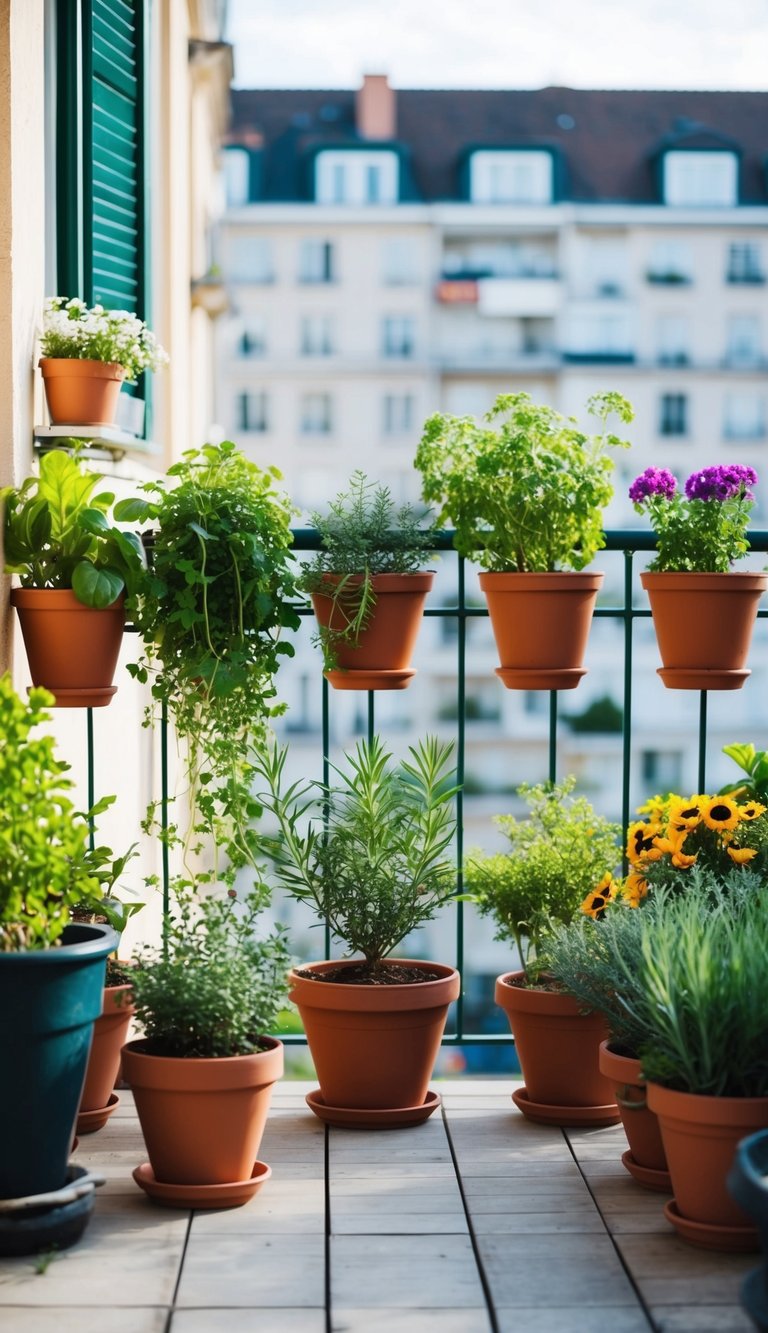
Container gardening is a great way to grow plants if you have little room. You can use pots, planters, or even old containers to grow flowers, herbs, or vegetables.
It works well on balconies, patios, or small yards. Choose the right soil and containers with good drainage to keep your plants healthy.
You can move containers to catch sunlight or protect plants from bad weather. This flexibility makes container gardening easy to manage anywhere.
Expert Tip from MrPlanter: “Use lightweight pots to move plants quickly as needed. Always check soil moisture often to avoid over or under-watering.”
8. Grow herbs like chives, parsley, and wild garlic vertically
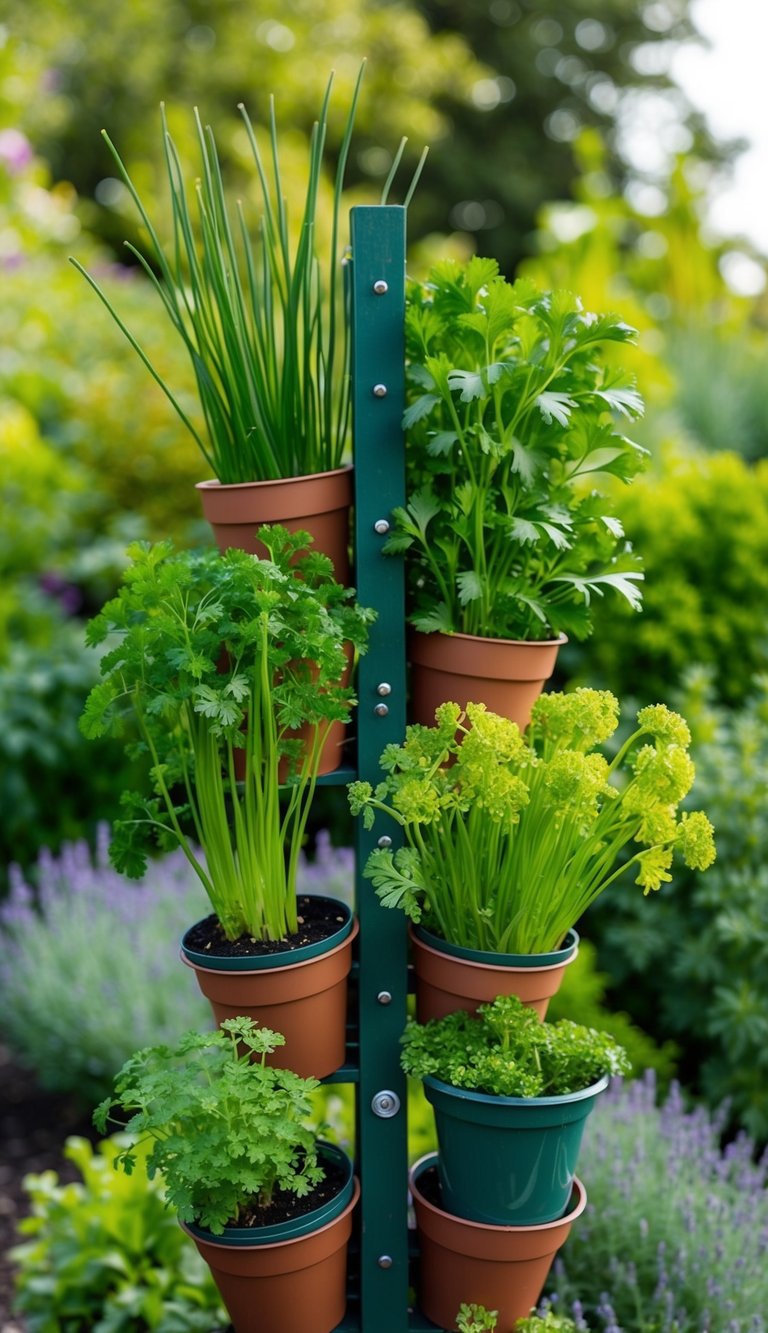
Growing herbs vertically saves space and keeps your garden neat. You can use wall planters, hanging pots, or vertical towers. Herbs like chives, parsley, and wild garlic do well in these setups because they don’t need deep soil.
Vertical herb gardens also make harvesting easier. Plus, they look great on balconies or small patios where ground space is tight.
Expert Tip from MrPlanter: “Choose lightweight containers for easier handling. Make sure your vertical garden gets at least 4-6 hours of sunlight daily.”
9. Design a cozy cottage garden with old-fashioned flowers
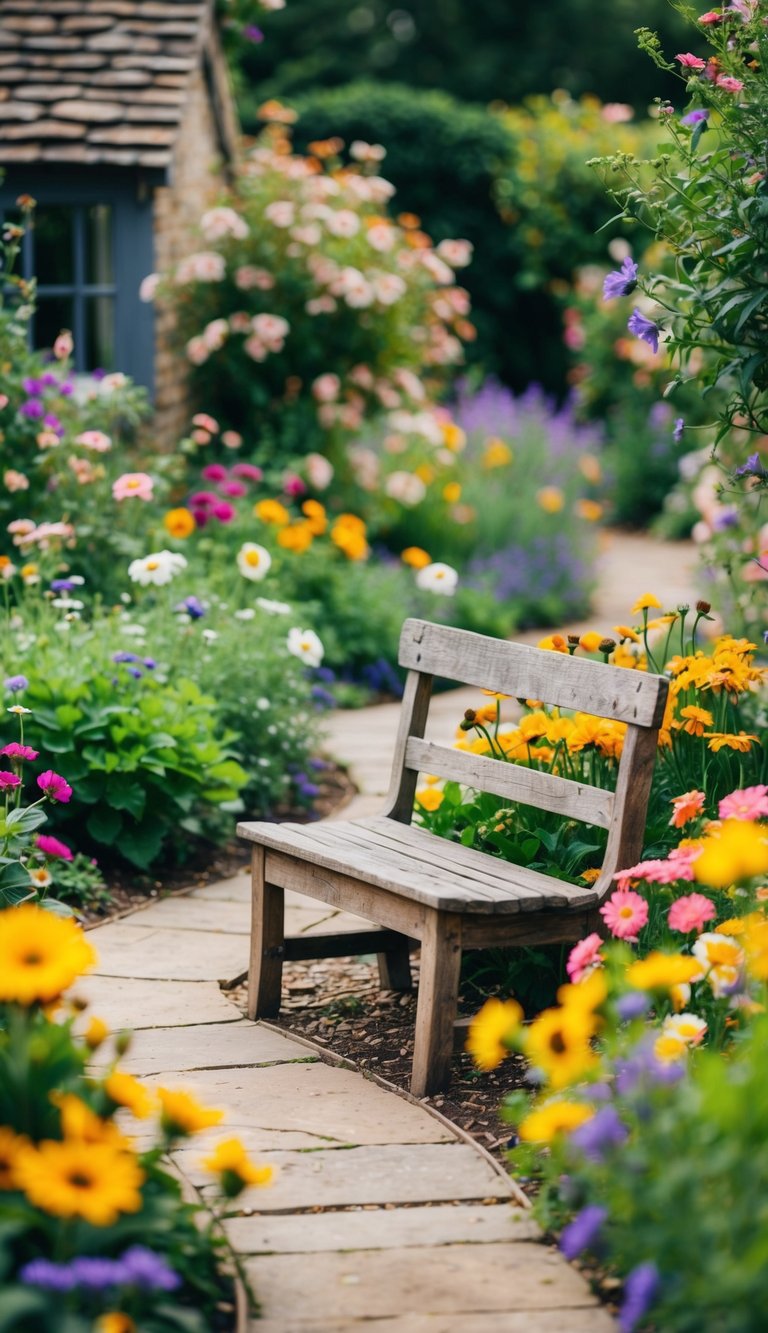
You can create a warm, inviting space by planting old-fashioned flowers like roses, sweet peas, and larkspur. These flowers add charm and fill your garden with soft colors and gentle scents. Keep the planting informal to capture that cozy, relaxed feel.
Mix tall and low plants to give your garden a full, layered look. Don’t worry about perfect lines; cottage gardens are meant to look natural and easygoing.
Expert Tip from MrPlanter: “Choose flowers that bloom at different times to keep your garden colorful longer. Keep watering steady but avoid overwatering to help your vintage flowers thrive.”
10. Use perennial plants for low-maintenance blooms
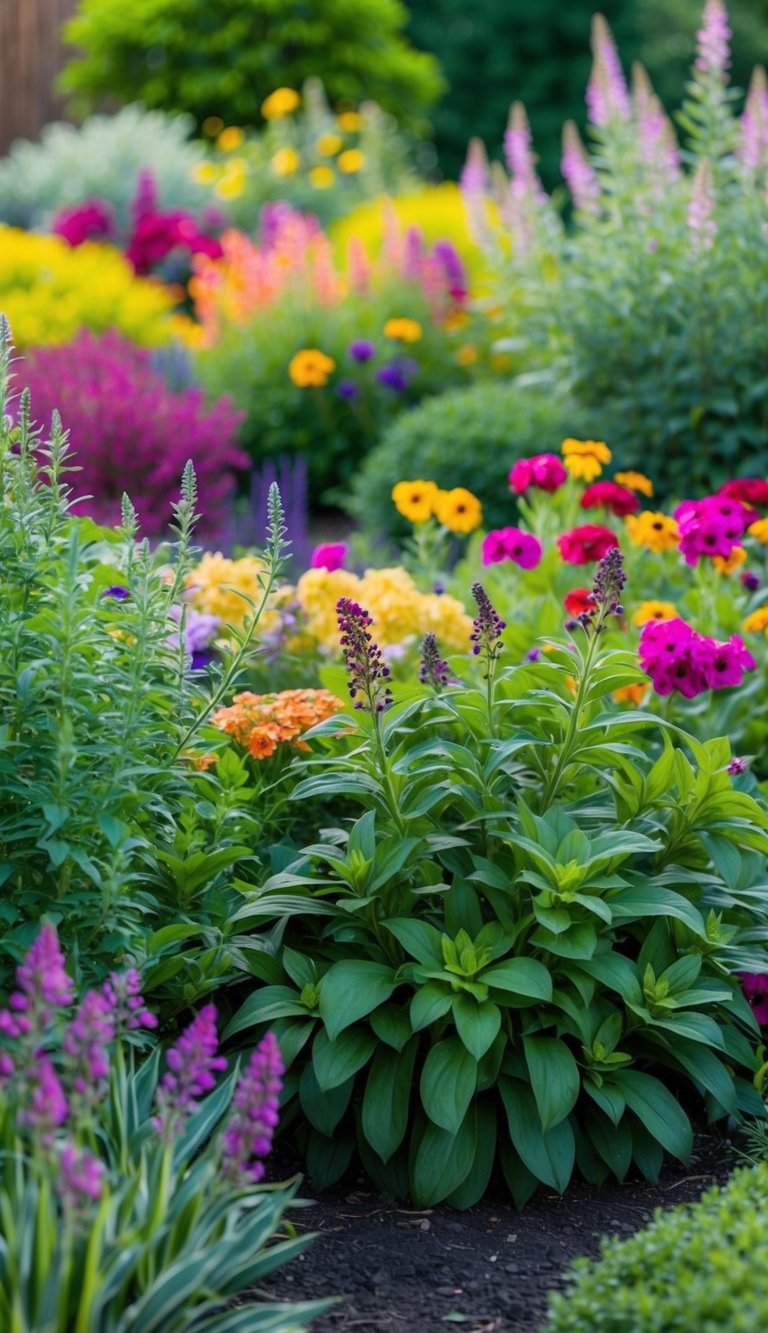
Perennial plants come back year after year, so you don’t have to replant them every season. They save time and keep your garden looking full without much work.
Choose varieties like coneflowers or black-eyed Susans to add color that lasts. Perennials also adapt well to many garden types, making them easy for beginners.
Expert Tip from MrPlanter: “Pick perennials that suit your climate to reduce watering and care. Group plants with similar needs to keep maintenance simple.”
11. Include bulbs in the fall for spring flowers
Planting bulbs in the fall helps you enjoy bright spring blooms. Choose bulbs like tulips, daffodils, and crocuses for easy color.
Make sure to plant bulbs in well-drained soil and at the right depth. Water them after planting to help roots grow before winter.
Expert Tip from MrPlanter: “Plant bulbs before the ground freezes to give them time to settle. Use a mix of early and late bloomers for a longer spring show.”
12. Make a shady garden area with hostas and ferns
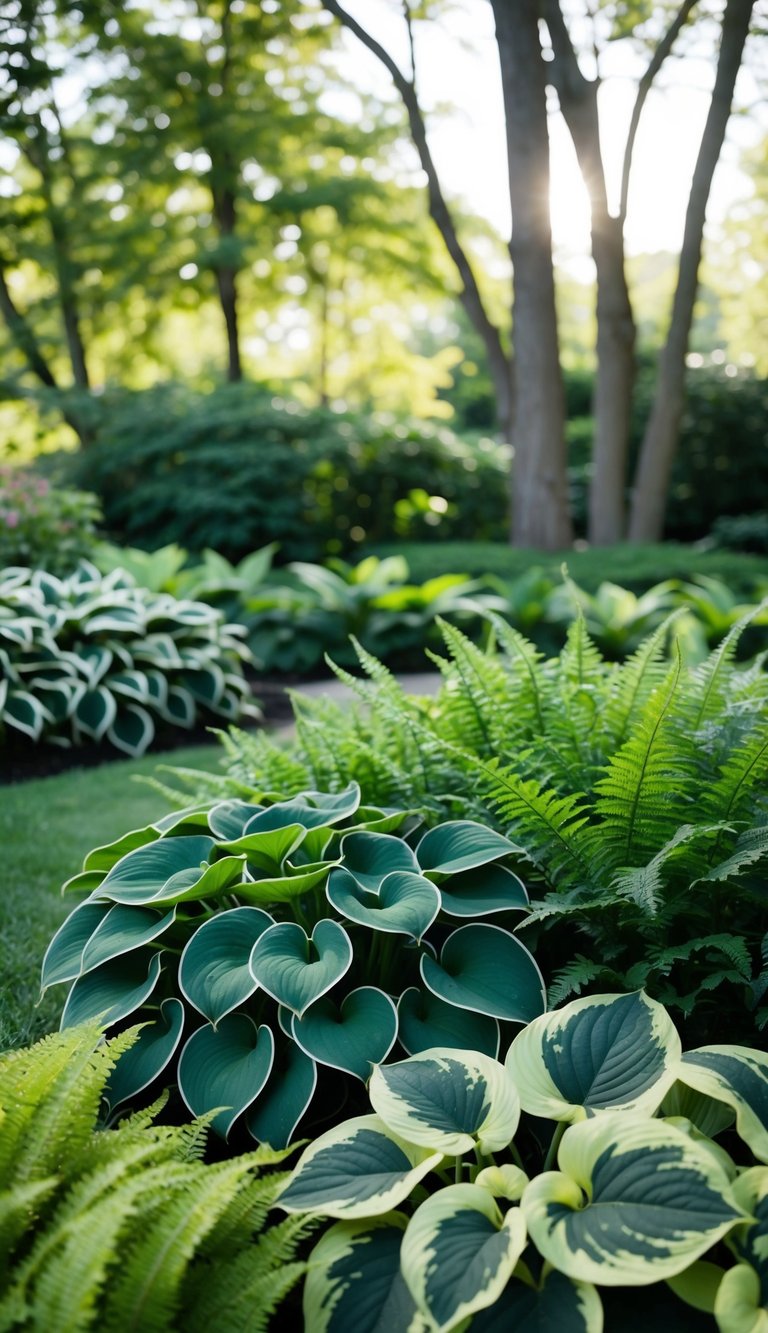
Hostas and ferns grow well in shady spots and add lots of green texture to your garden. You can mix different types of hostas, especially variegated ones, to brighten dark areas. Ferns bring soft, feathery leaves that contrast nicely with hostas’ broad foliage.
Try placing them near trees or along shaded walkways to create a calm, cool space. Both plants need moist, well-drained soil to thrive and stay healthy.
Expert Tip from MrPlanter: “Add mulch to keep the soil moist and cool. Choose hostas with different leaf colors to add interest even in deep shade.”
13. Craft homemade sun catchers for decoration
You can make simple sun catchers using clear plastic, beads, or colored glue. Hang them in your garden where sunlight hits to add bright spots of color.
Use natural items like leaves or flowers pressed between clear sheets for a personal touch. These catchers reflect light and brighten your outdoor space.
Expert Tip from MrPlanter: “Choose spots with direct sun to make colors pop. Use waterproof materials to keep your sun catchers safe from rain.”
14. Mix edible plants with ornamental ones

You can create a garden that looks great and feeds you by planting edible and ornamental plants together. Choose edibles with interesting shapes or colors, like purple cabbage or Swiss chard, to add beauty. Think about their size and texture so they fit well with your flowers. Mixing these plants saves space and makes your garden more fun to explore.
Expert Tip from MrPlanter: “Pick edibles that stay tidy and don’t spread too much. Use leafy greens or small fruits to add layers without crowding.”
15. Use raised beds to improve drainage

Raised beds help water drain away from your plants better than ground-level gardens. This stops water from pooling and keeps roots healthy.
If your soil is heavy or clay-like, raising the bed can prevent soggy conditions. Aim for beds that are at least 18 inches deep for good drainage.
Adding gravel under the soil can help water move through faster. Use landscape fabric between soil and gravel to keep them separate.
Expert Tip from MrPlanter: “Make sure the soil mix in your bed is loose and well-draining. Avoid compacting the soil when planting to keep water flowing freely.”
16. Install vertical flower planters for strawberries
Vertical planters save space and let your strawberries grow up instead of out. You can use stacked pots, tubes, or wall-mounted planters. These setups also help with air circulation and keep fruit off the ground, reducing rot.
Make sure your planter has good drainage and water regularly. Choose a sunny spot, as strawberries need plenty of light to produce well.
Expert Tip from MrPlanter: “Use lightweight containers to make moving easy. Add a drip irrigation system to keep water consistent without overwatering.”
17. Add vintage garden decor for charm
You can bring old items like rusted tools or antique pots into your garden. These pieces add a unique look without spending much money.
Try finding decorations at thrift stores or flea markets. They give your garden a warm, lived-in feel.
Mixing old items with plants creates a cozy space that feels special.
Expert Tip from MrPlanter: “Look for sturdy vintage pieces you can clean and repurpose. A little paint can freshen up old items without losing their charm.”
18. Plant shade-tolerant plants in dark spots

You can brighten up dark corners of your garden by choosing plants that grow well without much sunlight.
Plants like ferns, hostas, and Japanese forest grass do well in these areas. These plants stay healthy and add texture even in low light.
Look for options that thrive in USDA zones 4 through 8 for best results. Mixing different shades of green will bring depth and interest to those shadowy spots.
Expert Tip from MrPlanter: “Pick plants based on how much shade your spot gets during the day. Add mulch to keep soil moist and protect roots in darker areas.”
19. Consider a fence with climbing roses
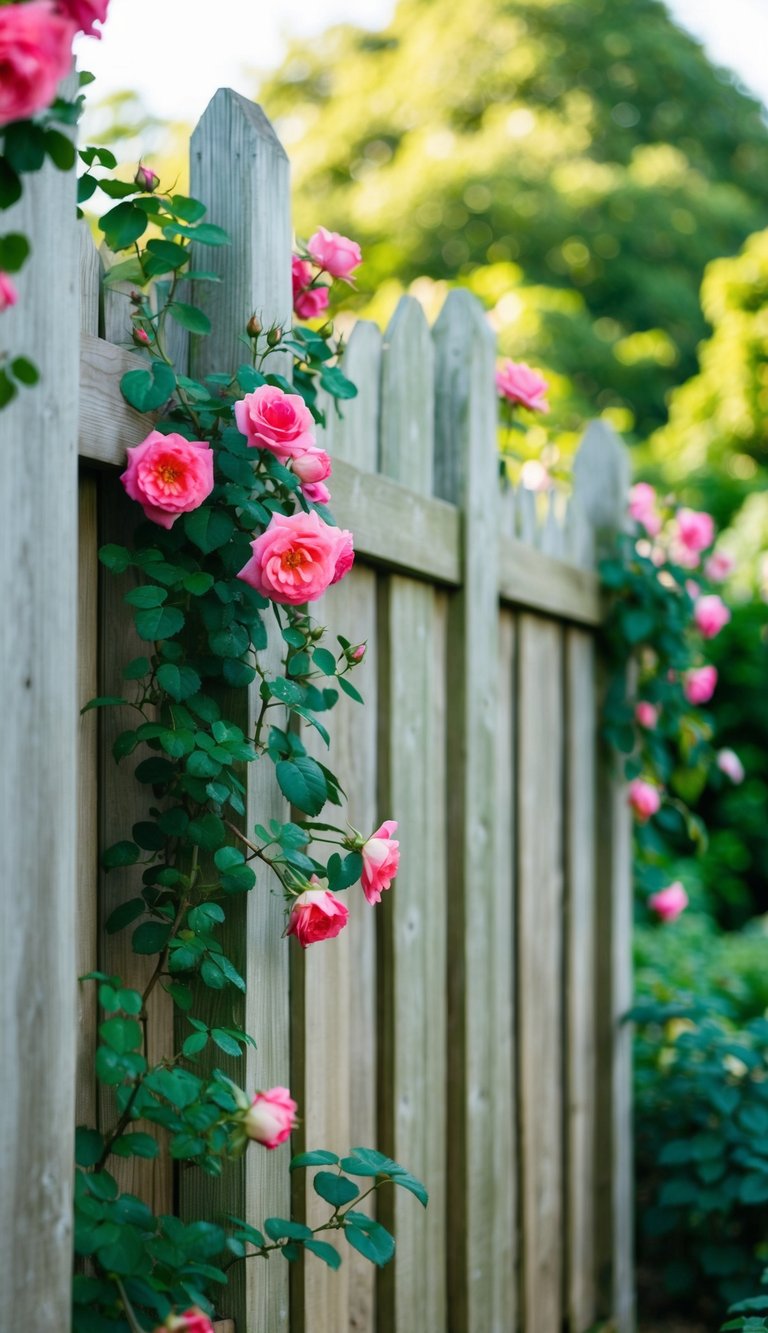
Climbing roses can turn your fence into a beautiful, natural screen.
Plant them about 8 inches from the fence to give roots room to grow. Choose a sturdy fence or add support so the roses can climb easily.
They add color and privacy without taking up much space.
Expert Tip from MrPlanter: “Use a gentle tie to train the roses as they grow. Keep the base clear of weeds to help them thrive.”
20. Include native plants to attract local wildlife
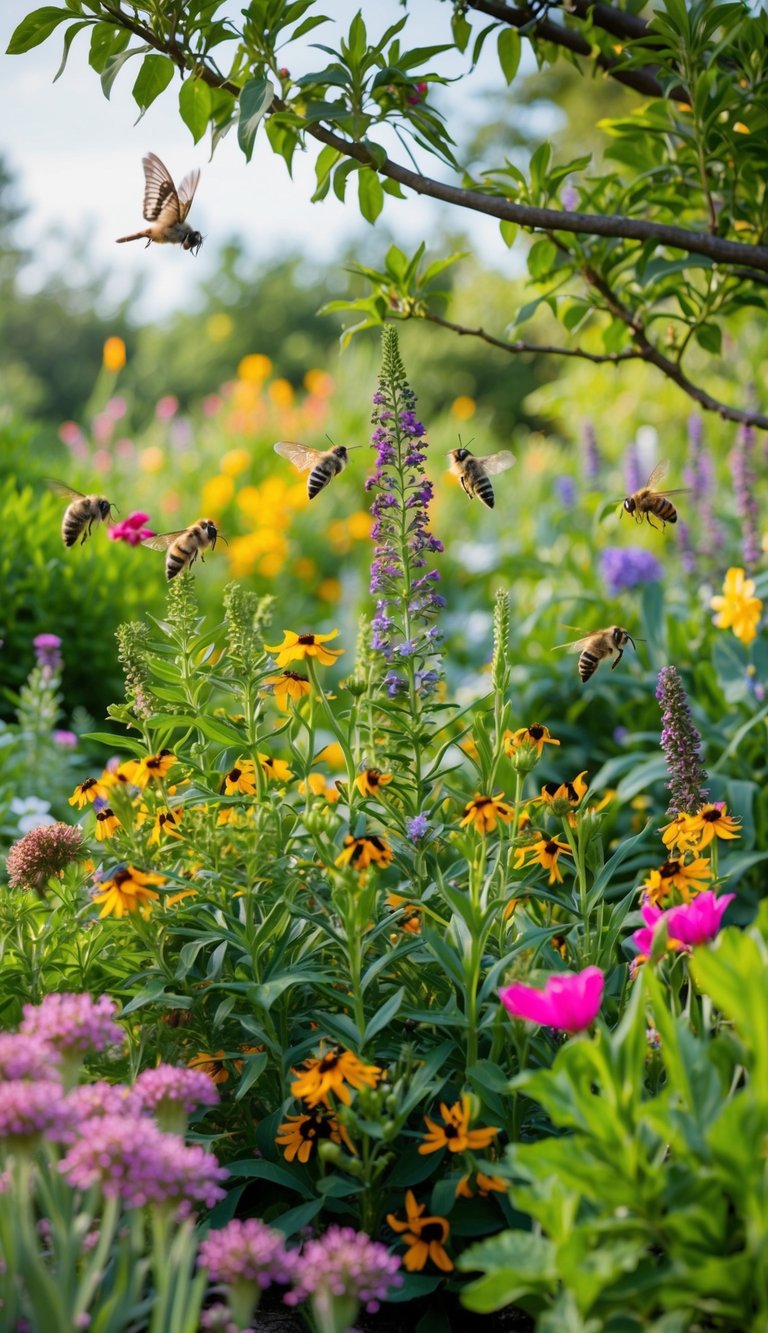
Planting native species helps support the wildlife that belongs in your area. These plants provide food and shelter for birds, butterflies, and other animals.
Native plants are easier to care for because they are adapted to your local climate and soil. Adding them creates a healthy, balanced garden that invites wildlife naturally.
Expert Tip from MrPlanter: “Choose a mix of native trees, shrubs, and flowers for year-round habitat. This keeps your garden lively and welcoming to many species.”
21. Create a small fairy garden with miniature accessories

You can use tiny plants and small decorations to make a fairy garden in your yard or even inside your home.
Add little paths made from pebbles or slices of wood to give it a natural look. Small fairy statues, houses, or even benches make the scene more magical.
Choose a small container or a quiet spot outside to start your garden. Keep the plants small and easy to care for to avoid overcrowding.
Expert Tip from MrPlanter: “Use a shallow container with good drainage to keep your plants healthy. Add tiny LED lights to make your fairy garden look great at night.”
22. Use mulch to keep soil moist and weed-free

Mulch helps keep your soil moist by slowing water evaporation. It also blocks sunlight, which stops weeds from growing around your plants.
You can use straw, grass clippings, or shredded leaves as mulch.
This layer of material helps keep the soil temperature steady. Replace organic mulch like straw once a year to keep it effective.
Expert Tip from MrPlanter: “Spread mulch about 2-3 inches thick for best results. Always use untreated materials to avoid chemicals in your garden.”
23. Plant colorful annuals for seasonal pops of color
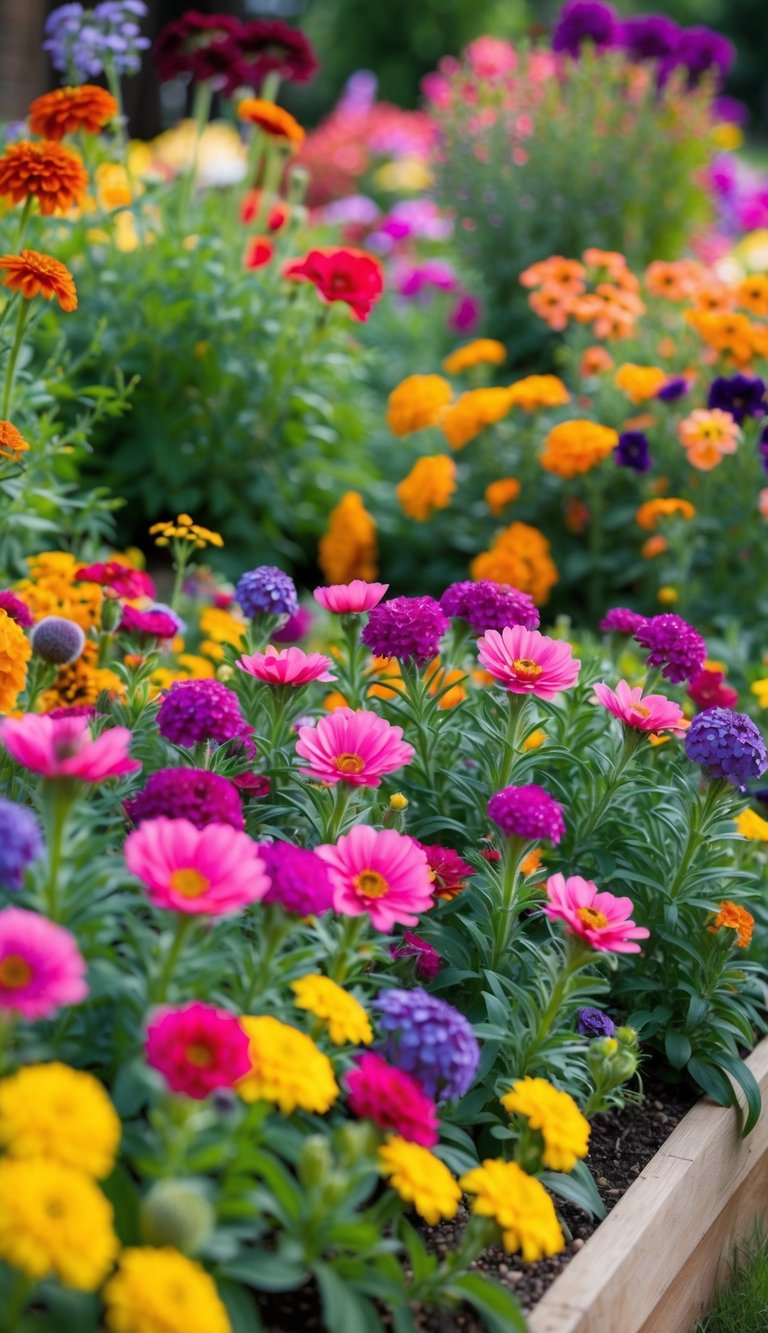
You can brighten your garden quickly by adding colorful annual flowers. These plants bloom all season and come in many shades, giving your space a fresh look.
Annuals like zinnias or begonias are easy to grow and attract pollinators.
Changing annuals each year lets you try new color combinations. They also fill gaps between perennials and shrubs, making your garden look full and lively.
Expert Tip from MrPlanter: “Choose annuals that thrive in your climate for the best results. Water them regularly to keep colors bright and blooms lasting longer.”
24. Add garden lighting for evening enjoyment
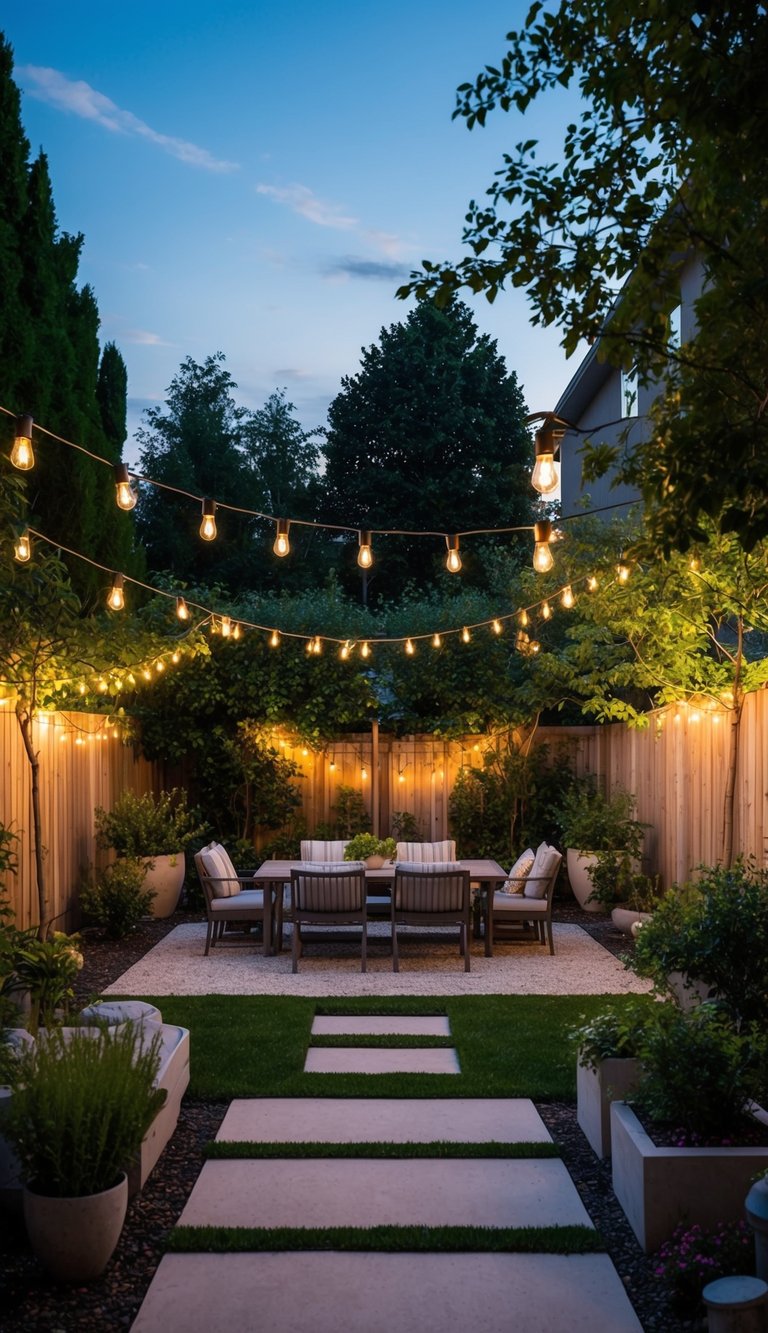
Adding lighting lets you enjoy your garden after dark. Hang lanterns from trees or posts to create a warm, relaxing glow.
You can also use string lights along paths or around seating areas to brighten the space.
Solar lights are easy to install and save energy. Mixing different light levels adds charm and keeps the look natural.
Expert Tip from MrPlanter: “Use soft, warm lights to avoid harsh glare. Place lights at different heights for a cozy, inviting feel.”
25. Craft pathways with natural stones
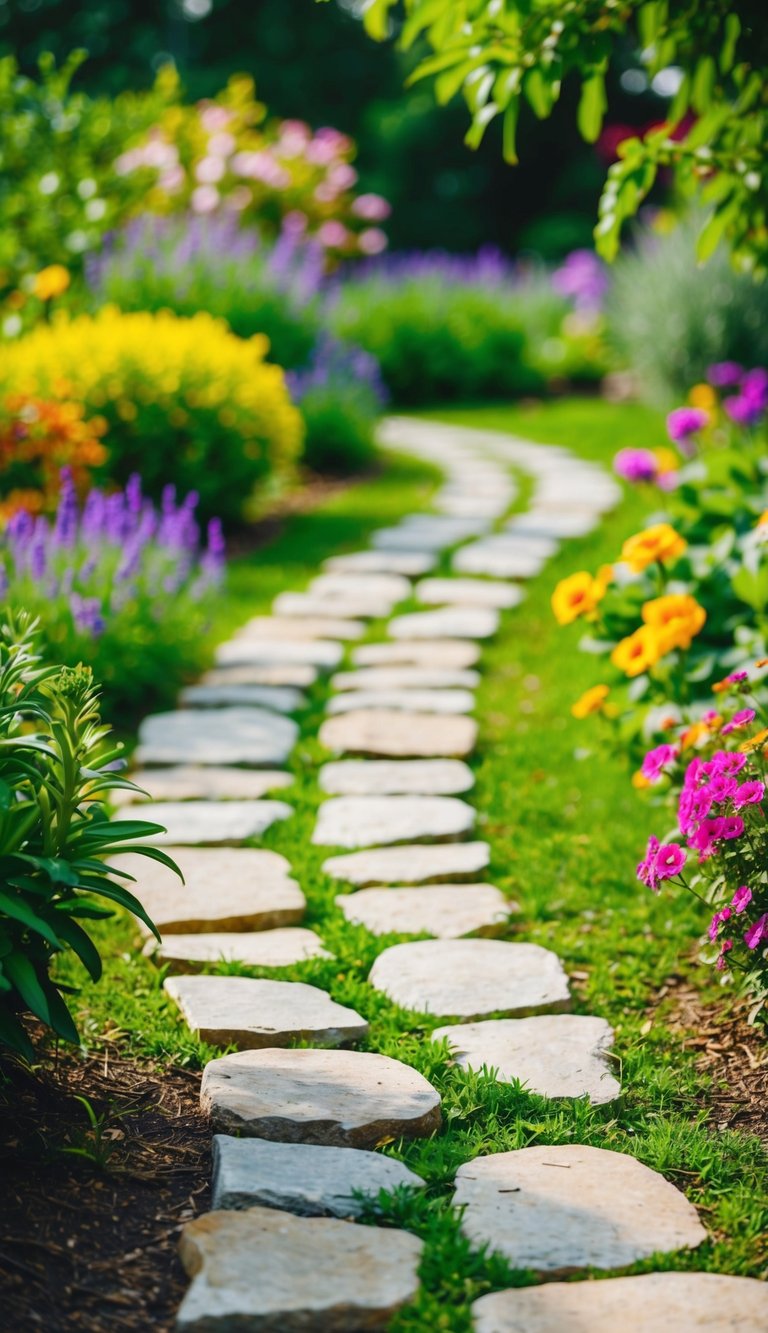
Creating pathways with natural stones gives your garden a simple and earthy look.
Stones like slate or flagstone work well because they blend with plants and soil. You can arrange them in straight lines or curves to fit your garden’s shape.
Natural stones are durable and don’t need much maintenance.
Expert Tip from MrPlanter: “Choose stones that are flat and wide for safer walking. Lay them on a firm base to keep them from shifting.”
